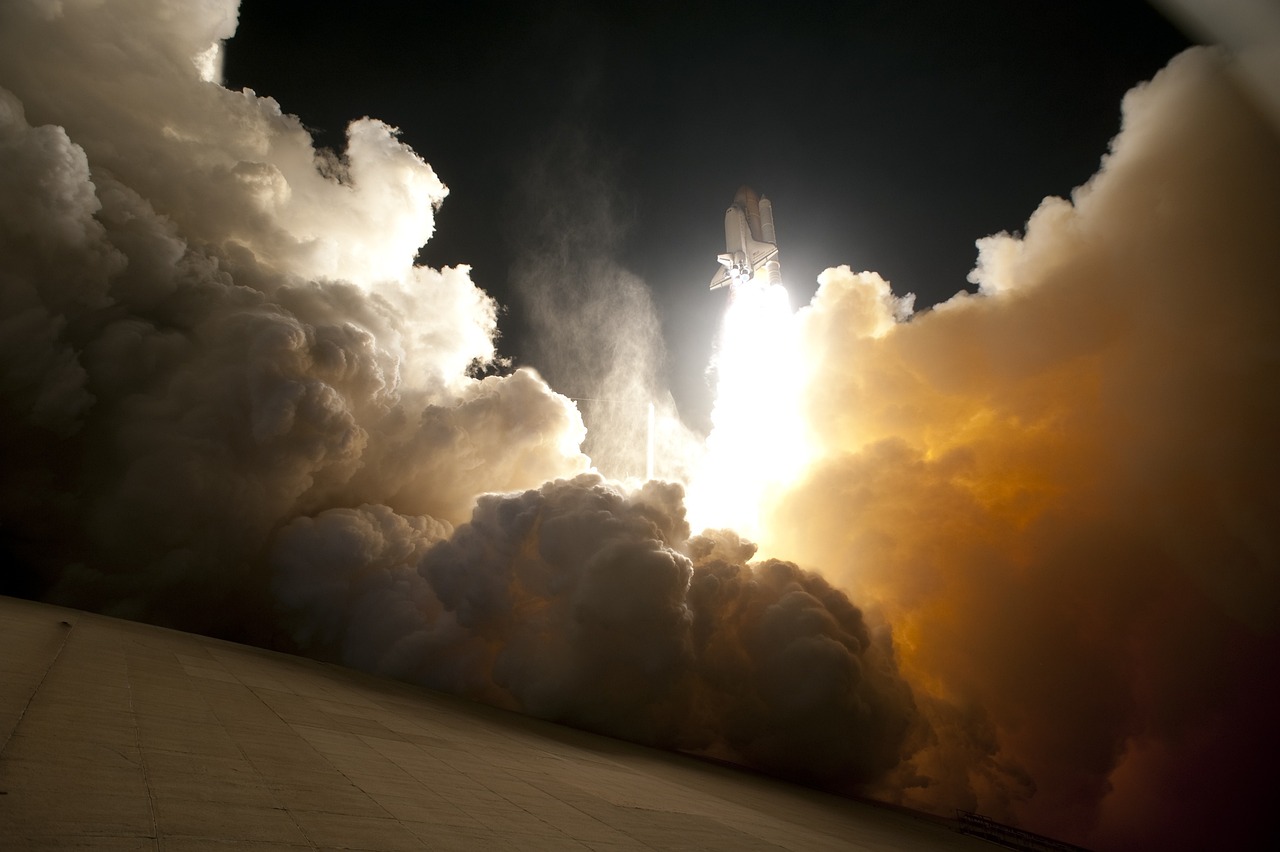ISRO Launches Aditya-L1 Probe To Unravel Sun’s Secrets

September 17, 2023
The Indian Space Research Organisation (ISRO) has embarked on a historic mission with the launch of the Aditya-L1 solar observatory probe from the Satish Dhawan Space Centre in Sriharikota, Andhra Pradesh, on Saturday, September 2 at 11:50 AM. This mission represents India’s endeavor to unlock the brightest secrets of the Sun by deploying seven specialized instruments.
The Aditya-L1 spacecraft, weighing 1,480.7 kilograms, is equipped with a suite of apparatus designed to unlock the secrets of our average-sized star. The payloads onboard Aditya L-1 will provide a comprehensive approach aimed at unraveling the enigmatic aspects of the Sun’s behavior, including coronal heating, solar wind acceleration, Coronal Mass Ejections (CME), solar atmosphere dynamics, and temperature anisotropy in the solar corona. This mission will contribute significantly to space weather predictions and our understanding of the Sun’s magnetic dynamics.
The Journey to Mars: Space Exploration and Technological Marvels
Key Instruments and Their Roles
- Visible Emission Line Coronagraph (VELC): VELC will play a crucial role in understanding coronal heating. By capturing images and spectral data of the solar corona, it will provide insights into temperature variations, density, and velocity within this region. These data will help scientists unravel why the Sun’s corona is hotter than its surface, a phenomenon that has puzzled researchers for decades.
- Solar Ultraviolet Imaging Telescope (SUIT): SUIT’s high-resolution imagery of the photosphere and chromosphere will aid in studying the dynamics of these essential solar layers.
- Solar Low Energy X-ray Spectrometer (SoLEXS): SoLEXS will focus on observing soft X-rays emitted from the Sun’s surface. These observations will reveal crucial details about surface activity.
- High Energy L1 Orbiting X-ray Spectrometer (HEL1OS): HEL1OS will provide hard X-ray data that is vital for studying high-energy solar phenomena.
- Aditya Solar Wind Particle Experiment (ASPEX): ASPEX’s in-situ analysis of solar wind particles will contribute significantly to the study of solar wind acceleration.
- Plasma Analyser Package For Aditya (PAPA): PAPA will analyze electrons and heavier ions in the solar wind.
Advanced Tri-axial High-Resolution Digital Magnetometers: These magnetometers will measure magnetic fields in the solar corona, helping scientists gain a deeper understanding of solar magnetic dynamics.
By combining data from these advanced instruments, ISRO’s Aditya L-1 solar probe will enable a comprehensive study of the Sun’s behavior. This information will not only help address the mission objectives but will also provide critical data for improving space weather predictions, safeguarding satellite communications, and protecting Earth’s magnetosphere.
ISRO has successfully launched and injected the Aditya L-1 probe into Earth’s apogee at 19,500 kilometers in the halo orbit. From this point, it will commence its journey of 1.5 million kilometers to reach the Lagrange 1 point.
Benefits of Understanding the Sun through the Aditya-L1 Mission
The Sun, as the primary energy source for our solar system, has always been a subject of immense curiosity and study. The Aditya-L1 mission, with its advanced apparatus and objectives, promises to provide a deeper understanding of the Sun’s mysteries. The insights gained from this mission can lead to a plethora of benefits, both immediate and long-term:
Enhanced Space Weather Predictions
A better understanding of solar activities, such as Coronal Mass Ejections (CMEs) and solar flares, can significantly improve space weather forecasting. Accurate predictions can help safeguard satellites, space missions, and the International Space Station from potential solar storms.
Protection of Earth’s Infrastructure
Solar storms can disrupt power grids, causing widespread blackouts. By predicting these events, we can take preventive measures to protect our power infrastructure, ensuring uninterrupted power supply.
Improved Satellite Communication
Solar activities can interfere with satellite communications. By understanding these activities better, we can develop technologies and protocols to minimize disruptions, leading to more reliable communication systems.
Advancements in Solar Energy
A deeper understanding of the Sun can lead to advancements in solar energy technologies. By studying the Sun’s radiation and its variations, we can potentially enhance the efficiency of solar panels and other solar energy harvesting methods.
Climate Studies
The Sun plays a crucial role in Earth’s climate. Insights into solar radiation and its variations can help in climate modeling, leading to better predictions and understanding of global warming and climate change.
Astronomical Insights
Studying the Sun can provide insights into other stars in the universe. By understanding our closest star, we can make informed assumptions and theories about distant stars and their planetary systems.
Technological Advancements
The challenges posed by a mission of this magnitude can lead to technological innovations. These advancements, while initially developed for the mission, can find applications in other fields, driving growth and innovation.
Educational Opportunities
The data and findings from the mission can be a valuable resource for educational institutions. It can inspire the next generation of scientists, astronomers, and curious minds, fostering a culture of learning and exploration.
Global Collaboration
Space missions often lead to international collaborations. Sharing data, research, and findings can foster a spirit of global cooperation, uniting nations in the quest for knowledge.
Economic Benefits
The technologies developed for such missions can have commercial applications, leading to economic growth. Moreover, a successful mission can position a country as a leader in space research, attracting investments and collaborations.
Tthe Aditya-L1 mission’s potential benefits extend far beyond the realm of space research. The insights gained can have a ripple effect, touching various aspects of our lives, from the technologies we use to our understanding of the universe. As we await the findings, we stand on the brink of a new era of knowledge and discovery.
Curiosities of Our Universe May Now Become Reality
The Indian Space Research Organisation (ISRO): A Historical Overview
ISRO was founded on August 15, 1969, by Dr. Vikram Sarabhai, who is often referred to as the father of the Indian space program. The organization was established with the vision of harnessing space technology for India’s development and conducting space research and exploration. It has since been at the forefront of India’s space exploration and satellite deployment endeavors
Milestones and Achievements
Satellite Launch Vehicles (SLVs): In the 1970s, ISRO began developing its series of satellite launch vehicles. The first satellite, Aryabhata, was launched in 1975, marking India’s entry into the space age.
Rohini Satellite Series: In the 1980s, ISRO successfully launched the Rohini satellite series, which was instrumental in developing remote sensing applications in India.
Chandrayaan Missions: ISRO made global headlines with its Chandrayaan missions. Chandrayaan-1, launched in 2008, was India’s first mission to the Moon and provided crucial data on the presence of water molecules on the lunar surface. Chandrayaan-3, another significant mission, successfully landed on the Moon, further establishing ISRO’s capabilities in space exploration.
Mars Orbiter Mission (Mangalyaan): In 2013, ISRO launched the Mars Orbiter Mission. the mission made India the first Asian nation to reach Martian orbit and the first nation globally to do so in its maiden attempt.
GSAT Satellites: ISRO has been instrumental in launching a series of communication satellites under the GSAT program, enhancing telecommunications, broadcasting, and broadband services in India.
Collaborations and International Recognition
ISRO has collaborated with various international space agencies and organizations. These collaborations have resulted in joint missions, satellite launches, and research projects. The organization’s achievements have garnered recognition and respect on the global stage. This positioned India as a significant player in space exploration.
Recent Endeavors
ISRO’s recent missions, such as the Aditya-L1 solar mission, show the organization’s commitment to exploring new frontiers. The Aditya-L1 mission aims to study the Sun and its dynamics. It will provide insights into space weather and the Sun’s impact on Earth.
The Future of ISRO
- NISAR Observatory: In collaboration with NASA, ISRO is set to launch the NISAR observatory, a project worth 12,300 crore rupees. This observatory aims to map the planet in just 12 days. It will provide insights into Earth’s dynamics, ranging from ice masses to natural hazards.
- SPADEX Twin Spacecraft Mission: ISRO is advancing its 124 crore rupee SPADEX mission, which involves twin spacecraft. This mission focuses on advancing orbital rendezvous techniques.
- Gaganyaan Mission: ISRO’s ambitious Gaganyaan mission aims to demonstrate human spaceflight capability. It will launch a crew of three members into an orbit 400 km above the Earth’s surface for a three-day mission. The mission plans to safely bring the crew back to Earth. ISRO is likely to launch Gaganyaan by the end of this year or the beginning of 2024. Interestingly, a humanoid robot named ‘Vyommitra’ will be the sole occupant for the first two flights. This robot is designed to understand human interaction and response in space conditions.
- Deeper Space Exploration: After the success of the moon missions, ISRO is planning to explore deeper into space. Several missions are lined up to further our understanding of the cosmos.
Where Elon Musk’s Tesla Is After 5 Years in Space
To Walk the Stars
From its humble beginnings to its current status as a global space powerhouse, ISRO has consistently demonstrated its dedication to advancing space technology for the betterment of humanity. With a rich history of achievements and a vision for the future, it continues to inspire and lead in the realm of space exploration.








